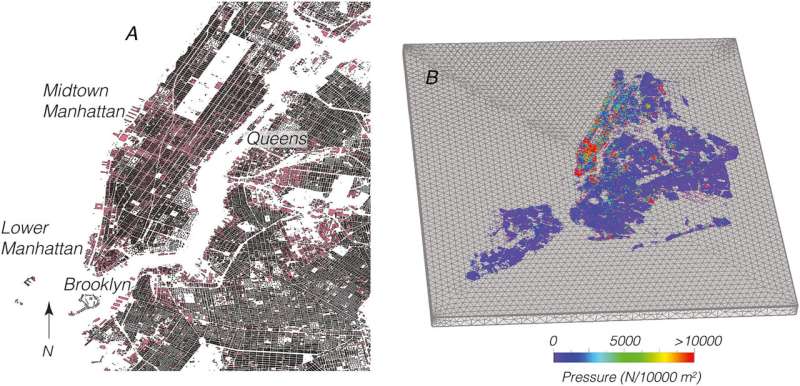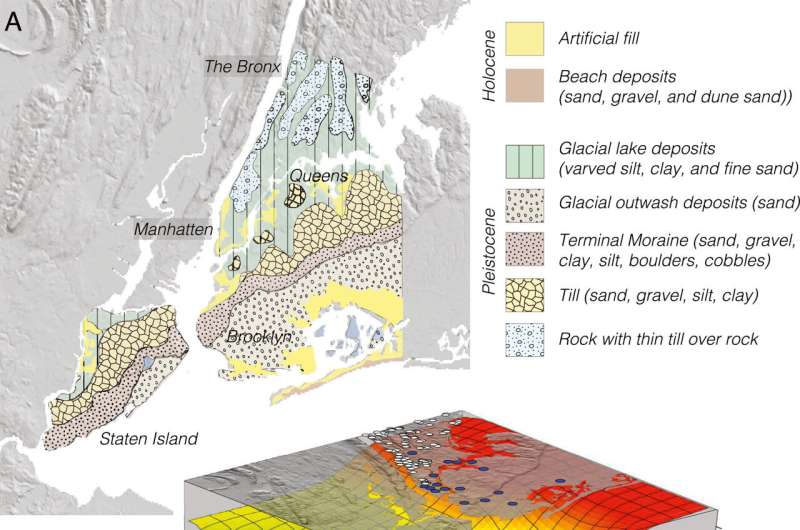May 17, 2023 report
This article has been reviewed according to Science X's editorial process and policies. Editors have highlighted the following attributes while ensuring the content's credibility:
fact-checked
peer-reviewed publication
trusted source
proofread
New York City building weight contributing to subsidence drop of 1–2 millimeters per year

A trio of oceanologists at the University of Rhode Island working with a geologist colleague from USGS Moffett Field has found that the massive weight of buildings in New York City is contributing to its subsidence drop. In their study, reported in the journal Earth's Future, Pei-Chin Wu, Meng Wei, Steven D'Hondt and Tom Parsons calculated the total mass of the buildings that make up New York City and applied it to models that predict natural subsidence to estimate how much overall subsidence is likely to occur in the coming years.
Subsidence, in geological terms, is when land becomes lower in altitude due to underground settling or removal of material or water—meaning, it sinks. Scientists have noted for many years that most coastal cities are slowly sinking due to settling and reductions in the water table. New York City, for example, has been sinking for many years, and likely will continue to do so in the future.
Coastal areas are particularly at risk due to climate change, which is leading to sea level rise. Such areas, it is believed, are likely to face serious challenges in the near future. In this new effort, the research team noted that few, if any, estimates of subsidence for cities such as New York, take into account the massive weight of the buildings in downtown areas. In this new effort, they sought to overcome that problem for New York by adding up the weight of all of its buildings and factoring in its impact on subsidence.

The work involved counting the buildings in New York City and making estimates of their weight and then adding them all together. The researchers arrived at a figure of 764,000,000,000 kilograms. Next, they divided the city into a 100 x 100 grid to calculate downward pressure from all the weight due to gravity. They then added that weight to natural ground weight on top of the conditions that are known to exist beneath New York City—mostly silt, sand and clay lake deposits along with some bedrock outcrops. The team also added real-world subsidence rates for the past several decades courtesy of satellite measurements.
Once complete, the model showed estimated subsidence rates for different parts of the city and also gave an average for the entire city—1 to 2 millimeters per year. They also found that some parts of the city are more at risk than others—clay-rich soils, for example, and artificial fills were found to be more prone to subsidence than sand deposits or bedrock, which will not sink at all.
More information: Tom Parsons et al, The Weight of New York City: Possible Contributions to Subsidence From Anthropogenic Sources, Earth's Future (2023). DOI: 10.1029/2022EF003465
Journal information: Earth's Future
© 2023 Science X Network




















